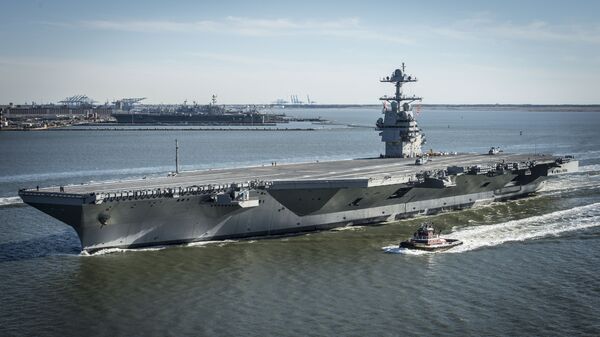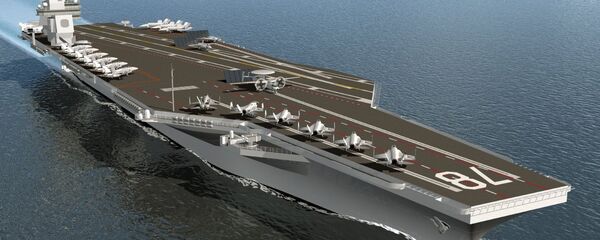The Ford was supposed to be finished in May 2015 at a cost of $10.5 billion. Instead, it’s just been finished, and still hasn’t been commissioned. What’s more, the expense of the nuclear-powered carrier has climbed to nearly $12.9 billion, or approximately 22 percent higher than the Pentagon’s original estimate.
"Builder’s Sea Trials provide an opportunity to test systems, components and compartments at sea for the first time," the US Navy said in an announcement. US Navy Rear Adm. Brian Antonio said he was "excited" that the ship was "underway under her own power for the first time, executing a rigorous and comprehensive test program for this first-of-class ship."
Upon completing BST, the carrier will sail back to Newport News, Virginia. The next step for the Ford will be the US Navy’s acceptance trials, at which point the ship should be ready for commissioning.
US Senator John McCain called the Ford "one of the most spectacular acquisition debacles in recent memory" back in 2015, when defense contractor Huntington Ingalls Industries, a spin-off of Northrop Grumman, failed to meet its deadline for building the ship. "And that’s saying something," McCain added.
Indeed, the Pentagon’s $1.4 trillion F-35 program has been nothing short of an endless money pit as well. According to data from the International Monetary Fund, South Korea generated $1.4 trillion in gross domestic product in 2016, placing it as the 11th largest economy in the world by GDP. Alternatively, Federal Reserve Bank of New York data show that the level of outstanding student loan debt has reached levels between $902 billion and $1 trillion, meaning the US federal government could wipe out all student loan debt in the country with the roughly half-a-trillion dollars left over, for the amount that it will spend over the span of the F-35 lifecycle.



